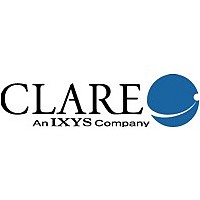M-8880-01P Clare, M-8880-01P Datasheet

M-8880-01P
Specifications of M-8880-01P
Available stocks
Related parts for M-8880-01P
M-8880-01P Summary of contents
Page 1
... M-8870 DTMF Receiver, while the transmitter uses a switched-capacitor digital-to-analog converter for low-distortion, highly accurate DTMF signaling. Tone bursts can be transmitted with precise timing by making use of the auto- matic tone burst mode. To analyze call progress tones, a call progress filter can be selected by an external microprocessor. ...
Page 2
... St/GT Steering input/guard time output (bidirectional). A voltage greater than V detected tone pair and update the output latch. A voltage less than V GT output acts to reset the external steering time-constant; its state is a funciton of ESt and the voltage on St. V Positive power supply input. ...
Page 3
... A call progress (CP) mode can be selected, allowing the detec- tion of various tones that identify the progress of a telephone call on the network. The call progress tone input and DTMF input are common; however, call progress tones can only be detected when the CP mode has been selected. DTMF signals cannot be ...
Page 4
... DTMF signal with low total harmonic distortion and high accu- racy. To specify a DTMF signal, data conforming to the encod- ing format shown in Table 2 must be written to the transmit data register. Note that this is the same as the receiver output code. The individual tones that are generated (f ferred to as low-group and high-group tones ...
Page 5
... Interrupt enable A logic 1 enables the interrupt mode. When this mode is active and the DTMF mode has been se- lected (b1 = 0), the IRQ/CP pin will pull to a logic 0 condition when either (1) a valid DTMF signal has been received and has been present for the guard time or (2) the transmitter is ready for more data (burst mode only) ...
Page 6
... Refer to Tables 3 and 4 for details on the control registers. The IRQ/CP pin can be programmed to provide an interrupt re- quest signal on validation of DTMF signals, or when the trans- mitter is ready for more data (burst mode only). The IRQ/CP pin is configured as an open-drain output device and as such re- quires a pullup resistor (see Figure 10). ...
Page 7
... DD SS Voltage on any pin Current on any pin Operating temperature Storage temperature Note: Exceeding these ratings may cause permanent damage. Functional operation under these conditions is not implied. Parameter Operating supply voltage Operating supply current Power consumption Inputs High-level input voltage, OSC1 Low-level input voltage, OSC1 ...
Page 8
... PARAMETER Receive signal conditions Valid input signal levels (each tone of composite signal; Notes Positive twist accept (Notes Negative twist accept (Notes Frequency deviation accept (Notes Frequency deviation reject (Notes Third tone tolerance (Notes 10) Noise tolerance (Notes 10) Dial tone tolerance (Notes 11) ...
Page 9
... All voltages referenced to unless otherwise noted. V *Typical values are for use as design aids only, and are not guaranteed or subject to production testing. Notes: 1. dBm = decibels above or below a reference power into a 600 W load. 2. Digit sequence consists of all 16 DTMF tones. 3. Tone duration = 40 ms. Tone pause = 40 ms. ...
Page 10
... Rev. G M-8880 Figure 11 Timing Diagrams Figure 12 Test Loads Page 10 www.clare.com ...
Page 11
... End of tone #n detected, tone absent duration valid, RX Data Register remain latched until next valid tone. (D) Tone # detected, tone duration valid, tone decoded and latched in RX Data Register. (E) Acceptable dropout of tone # tone absent duration invalid, RX Data Register remain latched. (F) End of tone # detected, tone absent duration valid, RX Data Register remain latched until next valid tone. Explanation of Symbols V DTMF composite input signal ...
Page 12
... Rev. G M-8880 .093 A1 .004 b .013 D .496 E .291 e H .394 L .016 Figure 14 Package Dimensions Page 12 Tolerances Inches Metric (mm) Min Max Min Max .210 5.33 .015 .38 .014 .022 .36 .56 .045 .070 1.14 1.78 .008 .014 .20 .36 .980 1.060 24.89 26.92 .300 .325 7 ...
Page 13
... Clare reserves the right to change the specification and circuitry, without notice time. The products de- scribed in this document are not intended for use in medical implantation or other direct life support applications where malfunction may result in direct physical harm, injury or death to a person. ...

















